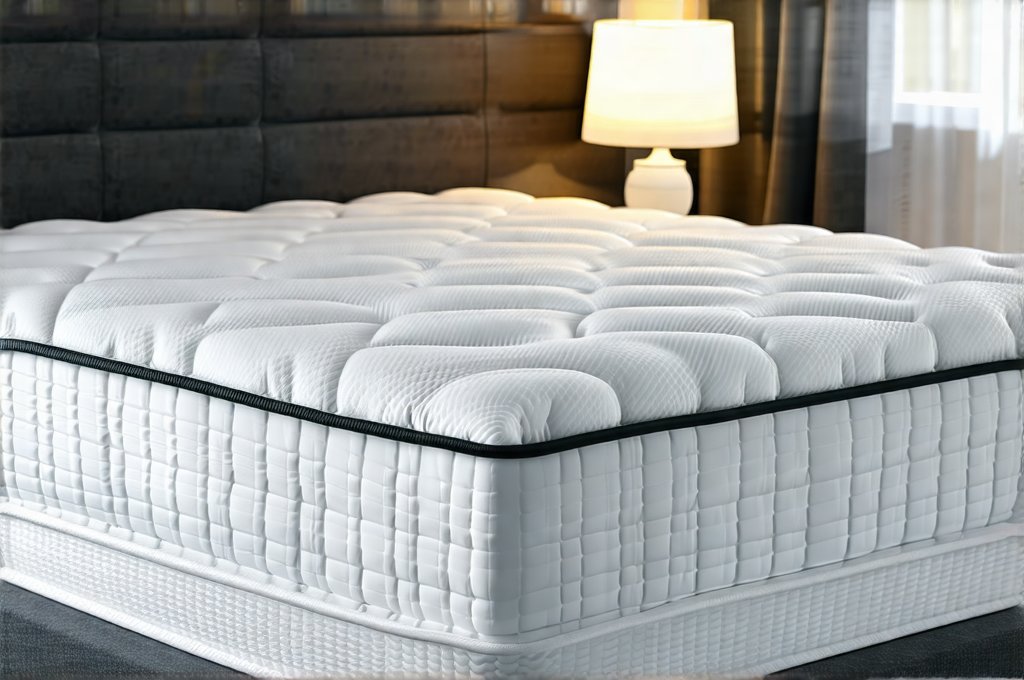Pelvic pain is a surprisingly common experience, affecting individuals across all ages and genders. Often dismissed as ‘just part of life’ or attributed to vague causes, chronic pelvic pain can significantly impact daily functioning, emotional well-being, and overall quality of life. While many factors contribute to this complex condition – including hormonal imbalances, nerve sensitivity, muscle dysfunction, and underlying medical conditions – the role of seemingly unrelated aspects like sleep surfaces often gets overlooked. This is where the question arises: could your mattress be contributing to your pelvic pain?
The connection between how we rest and our physical health is profound. For many, a mattress is simply a surface for sleeping; however, it’s an integral part of supporting proper spinal alignment, distributing body weight evenly, and minimizing pressure points. When these fundamental functions are compromised by a poorly chosen or deteriorated mattress, the ripple effects can extend far beyond restless nights, potentially exacerbating existing pain conditions like pelvic discomfort or even contributing to their development. Understanding this relationship requires delving into biomechanics, postural support, and the intricate interplay between sleep surfaces and the musculoskeletal system.
The Biomechanical Link: How Mattresses Impact Pelvic Alignment
The pelvis is a crucial structural hub in the body, responsible for supporting upper body weight, connecting the spine to the lower limbs, and facilitating movement. Proper pelvic alignment is paramount for distributing forces effectively throughout the body; when this alignment is disrupted, it can lead to imbalances that strain surrounding muscles, ligaments, and nerves – all potential triggers for pelvic pain. A mattress that doesn’t provide adequate support can directly contribute to misalignment. For instance, a mattress that sags in certain areas will cause the spine to curve unnaturally, putting uneven pressure on the pelvis and lower back.
Conversely, a mattress that is too firm may not allow the natural curves of the spine to be maintained, leading to increased pressure points and muscle tension around the hips and pelvis. This can lead to compression of nerves in the region, potentially contributing to conditions like sciatica or pudendal neuralgia, which often manifest as pelvic pain. The ideal mattress offers a balance between support and cushioning, conforming to the body’s natural contours without sacrificing structural integrity.
Furthermore, sleep position plays a significant role. Side sleepers require more pressure relief around hips and shoulders, while back and stomach sleepers generally need firmer support to maintain spinal alignment. A ‘one-size-fits-all’ approach to mattresses is rarely effective; choosing a mattress tailored to individual sleeping habits and body type is essential for minimizing biomechanical stress on the pelvis.
Mattress Materials & Their Role in Pelvic Comfort
The materials used in mattress construction significantly influence their ability to provide appropriate support and pressure relief. Traditional spring mattresses, while affordable, often lack contouring capabilities and can create localized pressure points. Memory foam mattresses offer excellent pressure relief by conforming closely to the body’s shape but may retain heat or feel restrictive for some individuals. Latex mattresses combine responsiveness with cushioning, providing a good balance between comfort and support; however, they can be heavier and more expensive than other options.
Hybrid mattresses, which incorporate layers of both springs and foam (memory foam, latex, or polyfoam), are increasingly popular as they attempt to offer the best of both worlds. The quality of these materials matters significantly. Low-density foams may compress quickly, losing their supportive properties over time, while high-quality coils provide durable support and airflow. Ultimately, there is no “best” mattress material; the ideal choice depends on individual preferences, body weight, sleeping position, and specific pain concerns. It’s also worth noting that mattress age plays a role – even the highest quality mattress will lose its supportive properties over time (typically 7-10 years), necessitating replacement to avoid contributing to pelvic discomfort.
Identifying Mattress-Related Pelvic Pain
Pinpointing whether your mattress is exacerbating or causing pelvic pain requires careful consideration and potentially some self-assessment. One key indicator is noticing a pattern between sleep quality and pain levels. If you consistently wake up with increased pelvic pain, stiffness, or discomfort that improves as you move around during the day, your mattress could be a contributing factor.
Here’s what to look for:
- Pressure Point Assessment: Lie on your side on your mattress. Can you feel excessive pressure on your hips and shoulders? If so, it suggests the mattress isn’t adequately distributing your weight.
- Spinal Alignment Check: Have someone observe your spine while lying in your typical sleep position. Is there a noticeable curve or sag? A healthy spine maintains its natural ‘S’ shape.
- Morning Stiffness & Pain: Do you experience significant stiffness and pain in your lower back, hips, or pelvis upon waking that gradually eases with movement? This could indicate misalignment caused by an inadequate mattress.
- Consider a Trial Period: Many mattress retailers offer trial periods allowing you to test the mattress in your own home for several weeks. This is invaluable for determining whether it provides sufficient support and comfort.
The Role of Sleep Position & Support
As previously mentioned, sleep position significantly impacts pelvic alignment and pressure distribution. Side sleepers generally benefit from softer mattresses that contour to their body shape, providing cushioning around hips and shoulders. Placing a pillow between the knees can also help maintain spinal alignment and reduce stress on the pelvis. Back sleepers typically require medium-firm support to prevent excessive arching of the lower back. A small pillow or rolled towel under the knees provides further lumbar support.
Stomach sleeping is generally discouraged as it often leads to significant strain on the neck, back, and pelvis; however, if you must sleep on your stomach, a firmer mattress with minimal cushioning is recommended to prevent excessive sinking of the hips. Regardless of sleep position, ensuring adequate support for the entire body – from head to feet – is crucial for minimizing pressure points and maintaining proper alignment. A supportive pillow is also vital for keeping the neck aligned with the spine, preventing compensatory movements that can contribute to pelvic discomfort.
Beyond the Mattress: Holistic Pelvic Pain Management
While choosing the right mattress can play a significant role in managing pelvic pain, it’s essential to remember that it’s rarely the sole solution. Pelvic pain is often multifactorial and requires a holistic approach to treatment. This means addressing underlying factors such as muscle imbalances, nerve sensitivity, hormonal fluctuations, and psychological stress. Physical therapy focusing on strengthening core muscles and improving pelvic floor function can be incredibly beneficial.
Other potential strategies include:
- Pain Management Techniques: Utilizing techniques like heat/cold therapy, massage, or gentle stretching can help alleviate pain symptoms.
- Mindfulness & Relaxation Exercises: Stress and anxiety can exacerbate pelvic pain; incorporating mindfulness practices or relaxation exercises can promote emotional well-being.
- Medical Evaluation: Consulting a healthcare professional is essential for accurate diagnosis and development of an appropriate treatment plan. This may involve imaging tests, physical examinations, and potentially referrals to specialists like gynecologists, urologists, or pain management physicians.
Ultimately, addressing pelvic pain effectively requires a comprehensive strategy that considers all contributing factors, including the often-overlooked role of sleep surfaces.





















